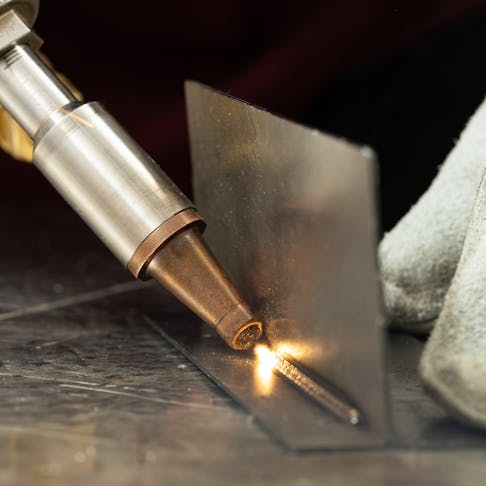Laser Beam Welding: Illuminating Precision, Comprehensive Guide

Introduction:
In the ever-advancing world of manufacturing and fabrication,
laser beam welding stands as a pinnacle of precision and innovation. This
comprehensive blog delves deep into the intricacies of laser beam welding,
explor ing its principles, applications, advantages, and the cutting-edge
technology that drives it.
Unveiling the Laser Beam Welding Process
The Power of Focused Light:
Laser beam welding is a welding technique that utilizes the
energy of a highly concentrated laser beam to join metals together. The laser
beam, often generated by a CO2 or fiber laser, is directed precisely onto the
metal surfaces to be welded.
The Welding Zone:
In the welding zone, the intense heat generated by the laser
beam melts the edges of the metal workpieces. As the melted material cools and
solidifies, a strong and durable bond is formed, creating a joint that is both
pr ecise and robust.

Key Advantages of Laser Beam Welding
Precision and Accuracy:
Laser beam welding is renowned for its exceptional precision.
The focused beam of light allows for minute control over the welding process,
resulting in intricate and finely detailed welds. This precision is especially
valuable in industries where small, delicate components are common.
Minimized Heat Affected Zone (HAZ):
One of the notable advantages of laser beam welding is the
minimized heat affected zone (HAZ). The HAZ is the area surrounding the weld
where the metal's properties are altered due to heat. Laser welding's
concentrated energy application results in a smaller HAZ, reducing the risk of
distortion and preserving the base material's integrity.
Speed and Efficiency;
Laser beam welding is a fast and efficient process. The laser
beam can be precisely controlled, making it possible to complete welding tasks
quickly. This efficiency is advantageous in high-production settings where time
is a critical factor.
Versatility:
Laser welding is highly versatile, capable of welding a wide
range of metals, from aluminum and stainless steel to exotic alloys. It is an
invaluable tool in industries where diverse materials are used.
Applications of Laser Beam Welding
Aerospace:
The aerospace industry relies heavily on laser beam welding
for its precision and ability to weld intricate and lightweight components. It
is used in the production of aircraft frames, engine parts, and other critical
components.
Automotive:
In the automotive industry, laser beam welding is employed
for the assembly of vehicle parts, from body panels to exhaust systems. Its
speed and precision make it an ideal choice for mass production.
Electronics:
The electronics industry benefits from laser beam welding in
the assembly of small, delicate components such as sensors and
microelectronics. The minimal HAZ ensures that sensitive electronic components
remain undamaged during the welding process.
Medical Devices:
Laser beam welding is integral in the manufacture of medical
devices and equipment. The precision of this welding method is crucial when
producing items like surgical instruments, medical implants, and diagnostic
devices.
Technological Innovations
Fiber Lasers:
The development of fiber lasers has revolutionized laser beam
welding. Fiber lasers are more compact, energy-efficient, and offer improved
beam quality, resulting in more precise and reliable welds.
Robotic Integration:
Robotic systems have been integrated with laser beam welding,
enhancing automation and precision. Robots can manipulate the laser beam with
unprecedented accuracy, making them valuable tools in industries demanding high
levels of automation.
Challenges and Considerations
Safety Measures:
Laser beam welding involves the use of high-intensity laser
beams that can be harmful to the eyes and skin. Proper safety measures,
including the use of protective gear and adherence to safety protocols, are
essential.
Cost of Equipment:
The initial investment in laser welding equipment can be
substantia l. However, the long-term cost savings, especially in high-volume
production, often justify the expense.
The Future of Laser Beam Welding
As technology continues to advance, laser beam welding is
likely to become even more precise, efficient, and accessible. Innovations in
beam delivery systems, automation, and software will further expand its
capabilities, making it an indispensable tool in various industries.
Conclusion:
In conclusion, laser beam welding is a remarkable welding process that has redefined precision and efficiency in manufacturing and fabrication. Its applications in aerospace, automotive, electronics, and medical industrie s continue to expand, while ongoing technological innovations promise an even brighter future for this cutting-edge welding method.









